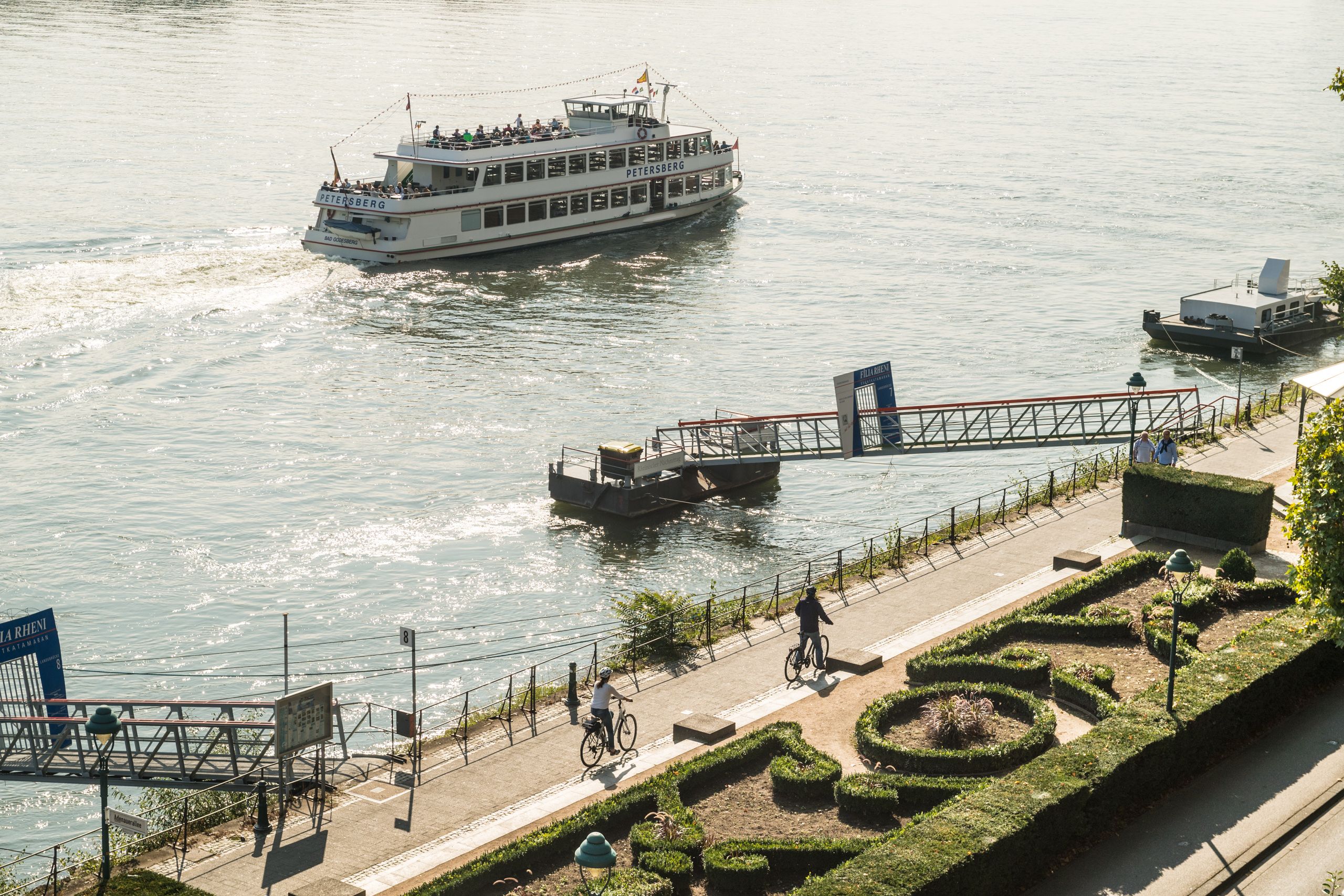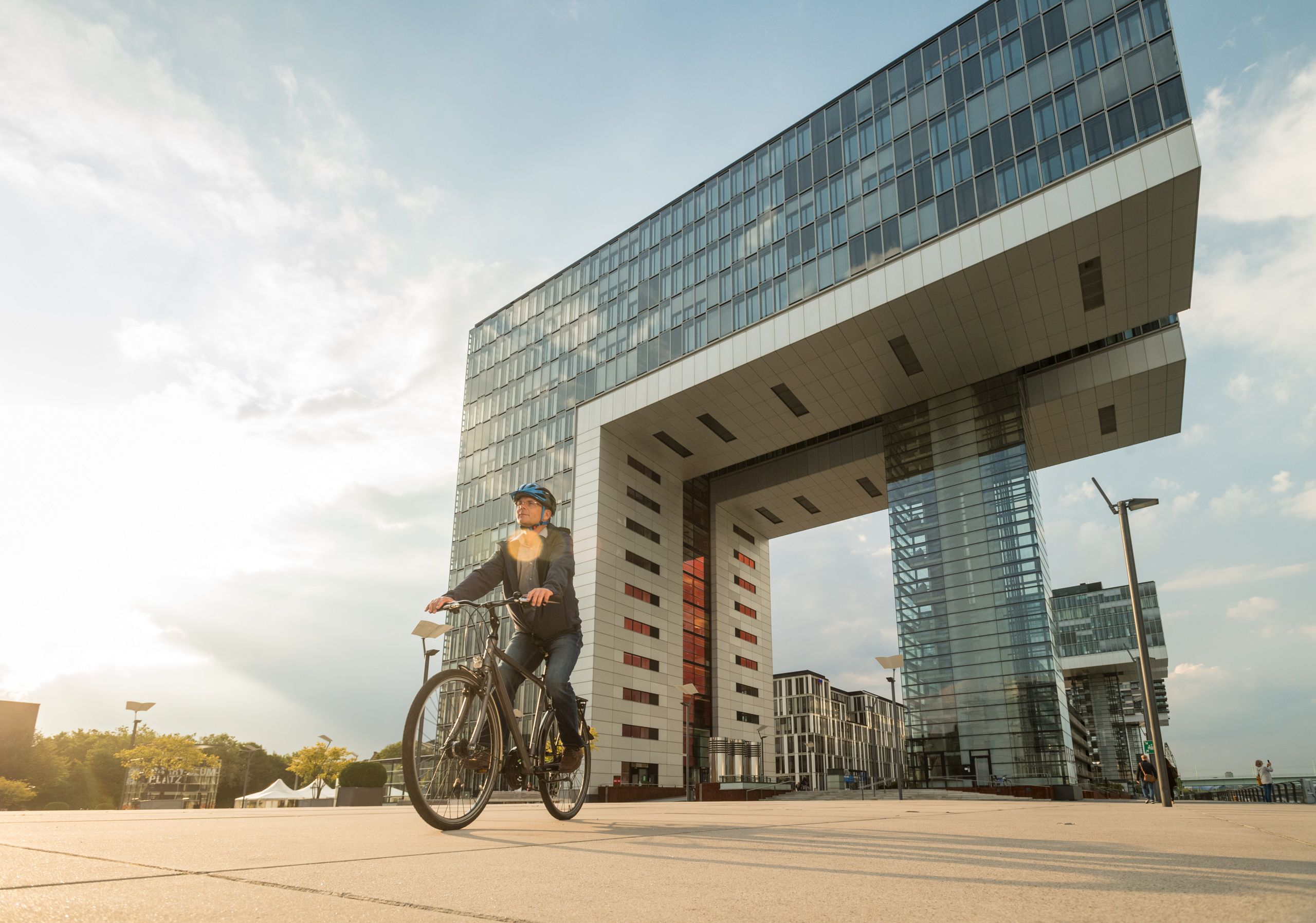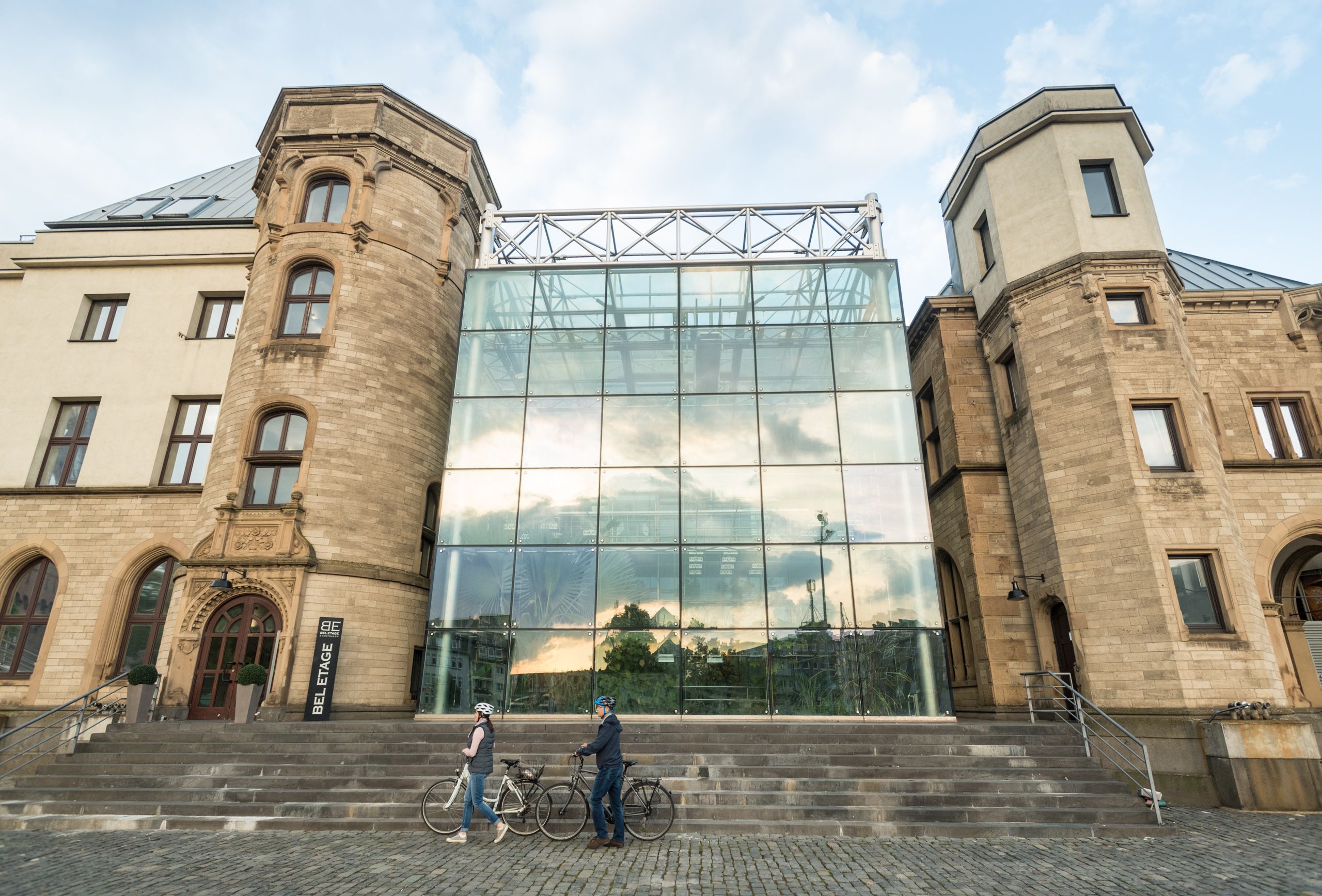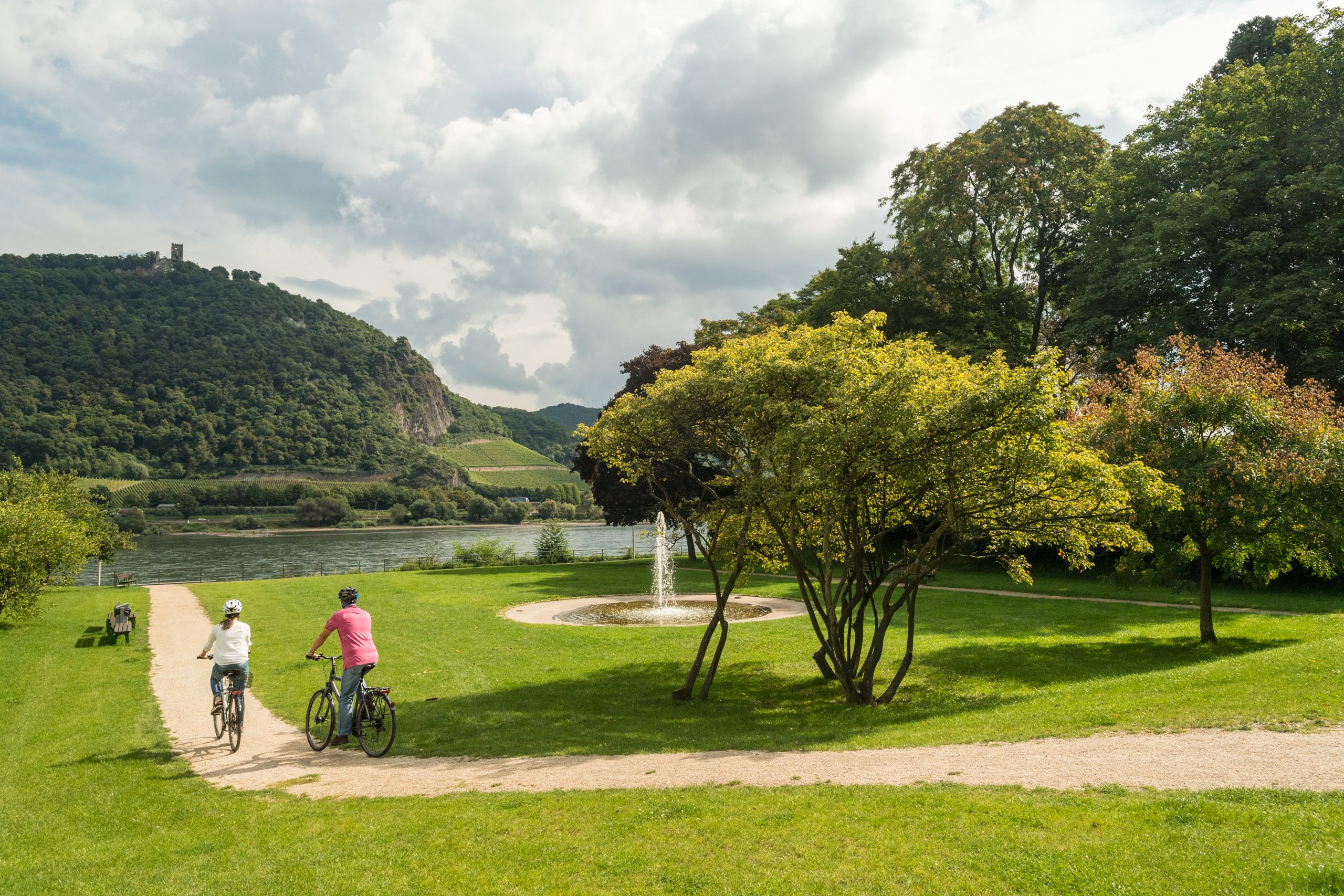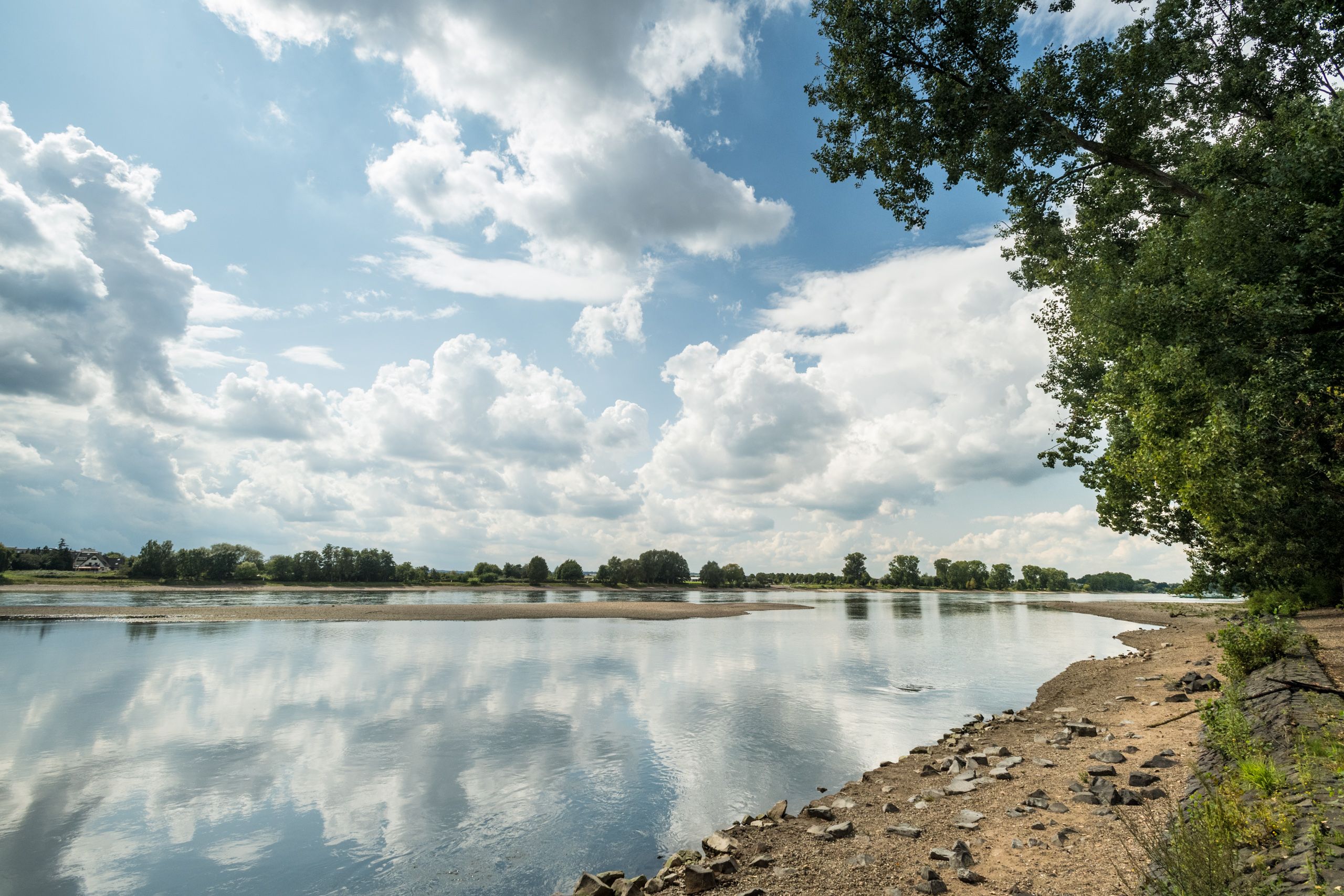Gorge-like valleys, densely forested peaks, rugged rocks and a wealth of flora and fauna characterize the Siebengebirge, which towers high above the Rhine. The stone diversity of the Siebengebirge has always fascinated builders and served them well: Drachenfels can be found in the churches and castles in Xanten, Aachen, Cologne and Brühl, some of which we marvel at today as UNESCO World Heritage Sites.
Great views from the Drachenfels
The bare stone walls of Drachenfels are framed by lush trees. Visitors can conquer it effortlessly with the Drachenfels cable car - high up, the breather with a view of the Rhine in the middle of the hilly landscape is particularly beautiful. If you still have a bit of energy and leave your bike here, you can go on wonderful hiking tours lasting several hours through the Siebengebirge.
Greetings to Beethoven
Just a few kilometers later, the cycle path reaches the former federal capital of Bonn. Ludwig van Beethoven was born in a house in Bonngasse in 1770. To this day, the city is associated with the musical genius and is known as the city of Beethoven. The birthplace, a rear building in the city center, has long since become a place of pilgrimage for music enthusiasts from all over the world. In addition to the performing arts, the visual arts are also revered in Bonn - excellent museums are lined up along the Museum Mile. In the House of History, visitors can trace German history from the post-war period to the present day.
Baroque pomp and rococo splendor
The Augustusburg and Falkenlust palaces are not far from Bonn. Their baroque splendor radiates far beyond the borders of Brühl. The palaces in the Rhine-Erft district near Cologne date back to Clemens August of the House of Wittelsbach, the Elector and Archbishop of Cologne. In 1725, he gave the order to build him a summer residence - Augustusburg Palace, named after him. Four years later, he commissioned the construction of his hunting lodge Falkenlust, which was to serve him as a falconry lodge and private retreat. The two palaces are connected by an avenue in the extensive palace park. Together with their gardens and parks, the two Brühl palaces have been on the UNESCO World Heritage List since 1984.
Off the beaten track: The Erft Cycle Path and Türnich Castle
If you want to drift along on your tour and can do without the Rhine for a few hours or days, there are other tours you can take through the Rhine-Erft district. The Erft Cycle Path passes Türnich Castle, which Count Severin turned into a real gem for day-trippers from all over the region.
Savoir vivre and dolce vita around the cathedral
The two towers of the nearest Unesco World Heritage Site, Cologne Cathedral, can be seen from afar. The way to it leads through the Rheinauhafen, where the three spectacular crane houses lean over the Rhine. Cycling under the oversized L-shaped buildings, cyclists reach the cozy old town with its cheerful Rhine promenade, where restaurateurs vie for guests. A detour deeper into the maze of alleyways is worthwhile: Cologne's renowned brewers offer their numerous Kölsch varieties and other delicacies here. There is also a famous representative of classical modernism right up to the present day nearby: the Museum Ludwig captivates international guests with Pop Art, Polke and Picasso and is within walking distance of the cathedral and the old town.
